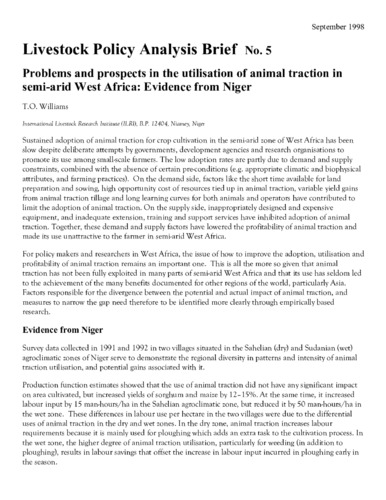Problems and prospects in the utilisation of animal traction in semi-arid West Africa: Evidence from Niger
Abstract
Sustained adoption of animal traction for crop cultivation in the semi-arid zone of West Africa has been slow despite deliberate attempts by governments, development agencies and research organisations to promote its use among small-scale farmers. The low adoption rates are partly due to demand and supply constraints, combined with the absence of certain pre-conditions (e.g. appropriate climatic and biophysical attributes, and farming practices). On the demand side, factors like the short time available for land preparation and sowing, high opportunity cost of resources tied up in animal traction, variable yield gains from animal traction tillage and long learning curves for both animals and operators have contributed to limit the adoption of animal traction. On the supply side, inappropriately designed and expensive equipment, and inadequate extension, training and support services have inhibited adoption of animal traction. Together, these demand and supply factors have lowered the profitability of animal traction and made its use unattractive to the farmer in semi-arid West Africa. For policy makers and researchers in West Africa, the issue of how to improve the adoption, utilisation and profitability of animal traction remains an important one. This is all the more so given that animal traction has not been fully exploited in many parts of semi-arid West Africa and that its use has seldom led to the achievement of the many benefits documented for other regions of the world, particularly Asia. Factors responsible for the divergence between the potential and actual impact of animal traction, and measures to narrow the gap need therefore to be identified more clearly through empirically based research.

